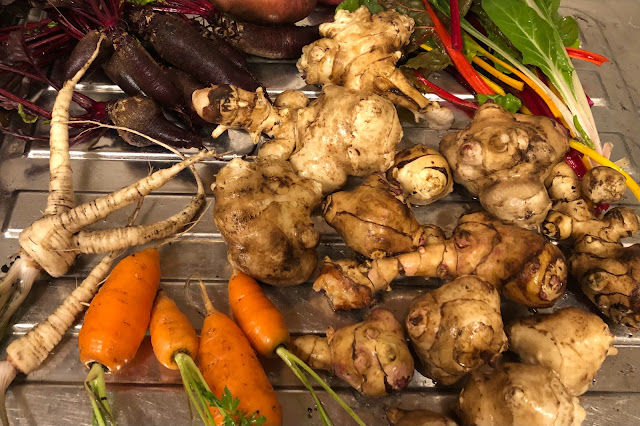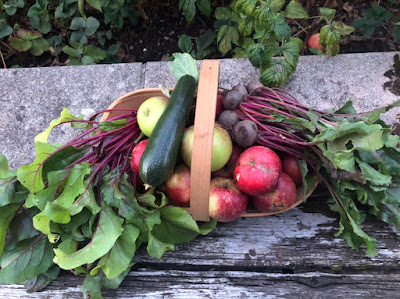After a winter that seemed to go on for ever, I've barely started sowing and it already feels like the summer solstice is drawing near! Let's see what's happening in the garden...
 |
| Yep, it's blossom time again. The pear trees never fail. |
 |
| Pretty little spring veg patch |
But it's not quite true to say that the veg garden languishes ... flowers to encourage early pollinators have been blooming - daffodils, violets, forget-me-nots, tulips ... while on the food front, late summer planted purple sprouting broccoli is doing me proud with regular pickings of delicious sprouts and there's also some chard that has stood over the winter. The PSB was planted out so late that I honestly didn't expect the plants to produce anything. They didn't have time to grow to their full stature before winter so to see heads forming and sprouts shooting up this month was genuinely and unexpectedly thrilling.
And then there's my expanding patch of wild garlic leaves - so delicious in a risotto or used to make pesto. I bought one plant almost a decade ago from Jekka McVicar's herb farm that now covers a metre and a half under the fruit trees. As it's away from pollution and organically grown, I can harvest without worry. Am I concerned about it taking over? No. Besides, is there such a thing as Too Much Wild Garlic? For now, there's little landing space for any seeds as the wild garlic is growing through Cerinthe (Honeywort), Ajuga and leaves of Hemerocallis (Day lilies).
 |
| PSB, rhubarb, gooseberry flowering; Sweet Cicely, Wild Garlic, Sweet Woodruff (all edible!) |
A rare week of warm weather interspersed with heavy rain has done the garden (and me) the world of good; the fruit trees are a riot of blossom (until spring storms blow it all away), rivers of Sweet Woodruff and Sweet Cicely are about to flower, ever dependable rhubarb has appeared, honeyberry and gooseberry bushes are flowering. I'm keeping my fingers crossed for plums, as usual.
Where I'm at with seed sowing ...
So while there are a few plants to pick from, I have to confess that I neglected to grow many other veg that could be filling the hungry gap at the moment. To remedy that, I've just sown kales, butternut squashes, leeks and Chioggia pumpkins indoors.
As ever, I long for a greenhouse. It wouldn't be empty for long if my tiny balcony is anything to go by. Currently filling every nook and cranny are trays of beetroots, nasturtiums, courgettes, spring onions, salad leaves, tomatoes, lamb's lettuce, beans, and pollinator friendly annuals of cosmos, calendula, gypsophila, verbena, sweet peas and echinacea. If I can find space for them, I also want to grow Bunny Tail grass for some winter wreaths.
I'm keeping veg sown into modules in the shelter of my balcony for now but outside the soil is warm enough to sow some veg (and flowers!) direct ... at least in the south of the UK. In the past week, broad beans have gone into the soil, garlic and onions that were overwintered in modules have been planted, the Jerusalem artichoke hedge is in, and peas, radishes and carrots will be next.
Spring has truly arrived with all its thrilling moments!














